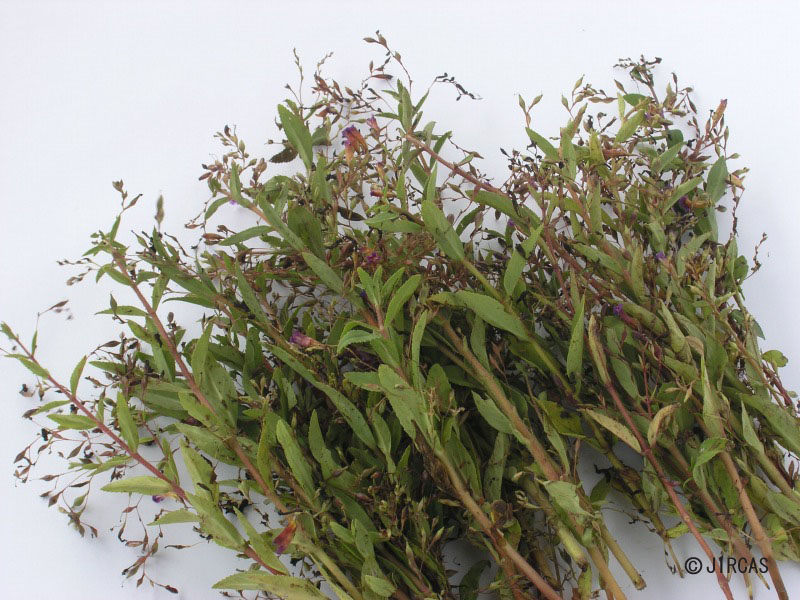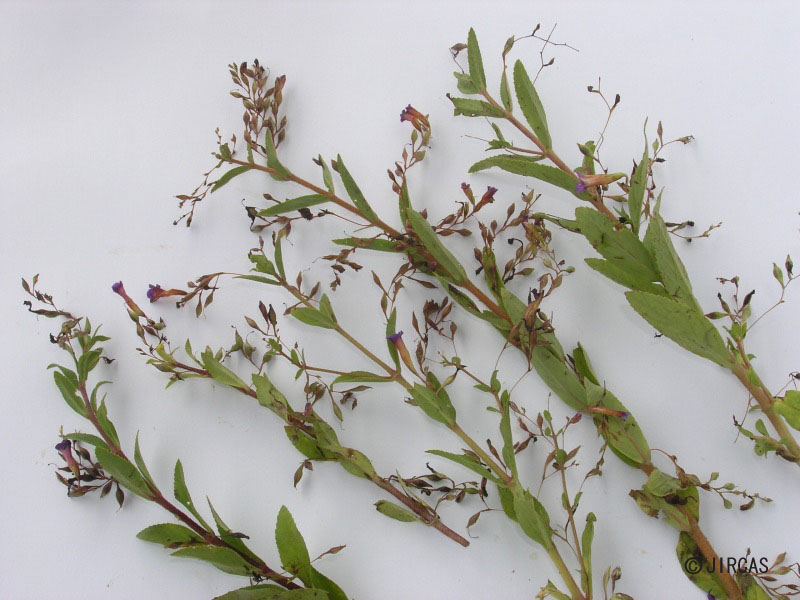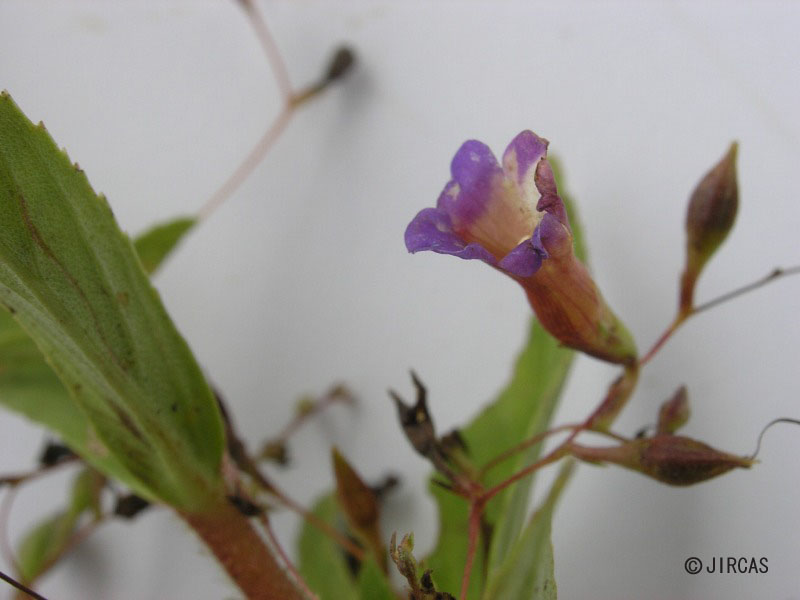Limnophila verticillata T.Yamaz. (Plantaginaceae)
- Scientific name
- Limnophila verticillata T.Yamaz. (Syn. L. aromatica Merr.)
- Family name
- Plantaginaceae
- Common name
- Shisokusa (Japanese)
- Local name
- Phak khayaeng
Aquatic herb. Stems creeping below, erect or ascending above; 20–30 cm tall, subdensely and shortly glandular-pilose or estipitate-glandular. Leaves sessile, verticils 4–6, linear to linear-oblanceolate, 6–12 × 1.5–2 mm, subacute-serrate, glabrous on both surfaces, punctate, prominently uni-veined. Flowers solitary, axillary; pedicels slender, 10–25 mm, glabrous or sparsely estipitate-glandular. Bracteoles setaceous, 1 mm. Calyx united at base, 4 mm long in flower, 5 mm in fruit, glabrous or sparsely estipitate-glandular, striate at maturity; lobes linear-lanceolate, acuminate. Corolla united at base, 10 mm long, glabrous outside, villous posteriorly inside; upper labellum broadly orbicular, 3 × 4 mm, emarginate; lower labellum 3-lobed, lobes orbicular, 3 × 3 mm. Capsule ellipsoidal, 4 × 2.5 mm, shorter than persistent calyx.
Common aquatic weed found in ponds, paddy fields, and marshy areas under full sun. Propagated by stem cutting.
Young shoots and leaves are fragrant; both are eaten with fermented fish dishes, dipping sauce such as nam phrik pla ra(dipping sauce with fermented fish), or curries such as kaeng no mai (bamboo shoot curry) or kaeng om (coconut milk curry).
Young shoots and leaves are fragrant; both are eaten with fermented fish dishes, dipping sauce such as nam phrik pla ra(dipping sauce with fermented fish), or curries such as kaeng no mai (bamboo shoot curry) or kaeng om (coconut milk curry).






